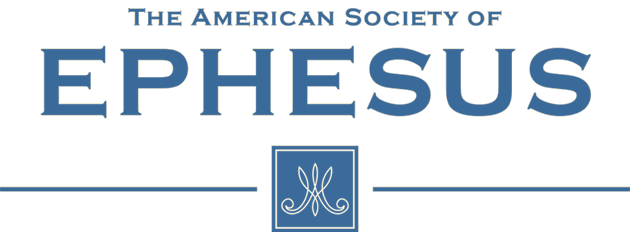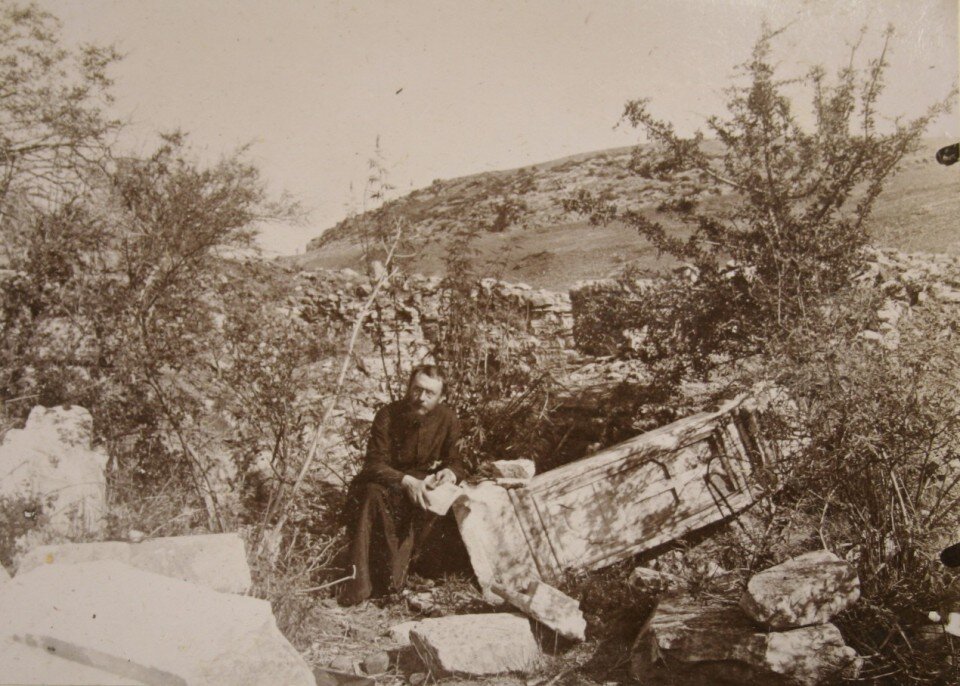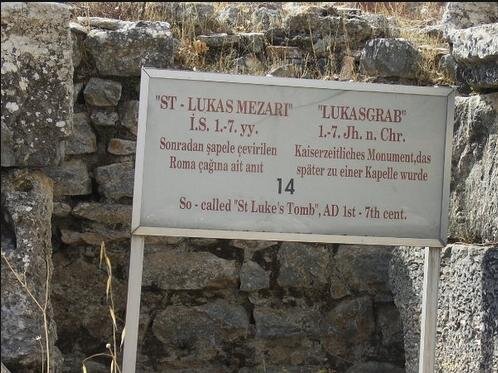Projects
The American Society of Ephesus (ASE) has assisted in aid to religious organizations and in archaeological restoration of Christian sites for 60 years.
ASE is most proud of the support given to the House of Mary on Bulbul Dagh mountain in Ephesus, Turkey, the last earthly home of the Blessed Virgin Mary, mother of Jesus; and the restoration of the Basilica and Tomb of St. John, also in Ephesus, Turkey. The priests’ home and the home for nuns, adjacent to the House of Mary, were both built by ASE. It has also been reported that Mary appeared at the house to witnesses in 1902, and again in 1959. For over a century, thousands have made an annual pilgrimage to the site on August 15, the Feast of the Assumption. The site is venerated by Orthodox, Catholic, and Protestant Christians, as well as Muslims as the house of the Virgin Mary. It is known in Turkey today as Meryem Ana Evi (House of the Virgin Mary), but for centuries before was known as Panaghia Capouli (Door of the Holy Virgin).
Our Lady of Ephesus Chapel (Lima, Ohio).
This chapel was dedicated by ASE in January 2015 at Lima Central Catholic High School in Lima, Ohio, named “Our Lady of Ephesus Chapel.” The facade of the chapel is made to resemble Mary’s house in Ephesus, Turkey, and is the 6th such replica in the world, with others located in Vermont, Argentina, Bosnia, Brazil, Germany and the Netherlands.
Church of Mary (Ephesus, Turkey).
On this site in the year 431 A.D., over 200 bishops met at the direction of the pope to debate the question of whether Jesus was born merely human or born divine. The Council of Ephesus concluded that Jesus was born divine, the son of God, which makes Mary the “Mother of God,” or “Theotokos.” The church, known as both “The Church of Mary,” and “The Double Church” (due to later construction of two altars, dedicated to Mary and to St. John), has been damaged by earthquakes and vandals over the centuries. ASE has worked with the Turkish Ministry of Culture and the Austrian Archaeological Institute on renovations for many years. It is an on-going project to restore the first-ever church in the world named for Mary, the Blessed Virgin. At that time, churches were only named for saints who either lived or died in the city, thus giving credence to the belief that Mary lived in Ephesus for some period after the crucifixion.
St. John’s Basilica and Tomb (Ephesus, Turkey).
The Roman emperor Constantine built this remarkable basilica over the tomb of St. John in the 4th Century, A.D.; and his successor, Emperor Justinian, built a larger basilica there in the 6th Century, A.D. Again, centuries of earthquakes and vandals had taken the great church down to the ground until the 1960’s, when ASE began the restoration. We have worked in cooperation with the Turkish government and archaeologists to restore the Basilica and Tomb of St. John for 60 years.
Clock Tower known as “Cross Time” (Selcuk, Turkey).
To mark the 60th Anniversary of The American Society of Ephesus (George B. Quatman Foundation), a large-scale work of art was donated by ASE in 2014. The large obelisk is named “Cross Time,” and contains images of the history of Selcuk/Ephesus from its early Pagan era, to its Christian, to the current Muslim culture. Two clock faces are mounted high on the tower. It is capped by a swirling glass piece, etched with humans with outstretched arms, as if flying up to Heaven. This was a gift to the people and city of Selcuk in thanks for their cooperation and support for six decades. The artwork was created by David and Robert Lepo of LepoWorks, Lima, Ohio.
Cave of the Seven Sleepers (Ephesus, Turkey).
In the Koran, there is a story of seven Christian boys who were persecuted by Roman guards during the pagan era, and walled inside a cave. The boys fell asleep and awoke many years later to discover that Ephesus was now Christian. Named the “seven sleepers,” the boys eventually died and were buried in this cave-church. It is a very fragile site and ASE is working on its restoration in cooperation with the Turkish officials and the Austrian Archaeological Institute. The Cave of the Seven Sleepers is one of the few joint Christian-Muslim shrines in the world. It contains the sarcophagus of Mary Magdalene, whose body was removed to France during the Crusades, leaving behind the decorative stone coffin in this church-cemetery.
St. Paul’s Cave (Ephesus, Turkey).
We know that St. Paul lived in Ephesus for three years, from his own writings. Scholars say that most of his “letters” were written during those years, here in Ephesus. This cave-church was not the home of St. Paul, but was called that by an archaeologist after discovery of a wall painting of the saint, the earliest known portrait of St. Paul. The locals referred to the cave-church as “Panaghia Kryphi,” or “Hidden Virgin,” as it was believed that Mary lived here when she first arrived in Ephesus in the company of St. John. While we don’t know the exact history of the cave, studies have revealed multiple layers of Christian artwork on the walls, depicting Jesus and various saints. Due to the fragile nature, this site is not open to the public.
St. Luke’s Tomb (Ephesus, Turkey).
While we know the location of the tombs of the other three gospel authors (Matthew in Salerno; Mark in Venice; John in Ephesus), we do not know for certain the original location of St. Luke’s tomb. There is a church in Padua, Italy which is claimed to hold the purported remains of St. Luke but, is it possible that he was at some time buried in Ephesus? We know that his remains were moved several times over the centuries. Theologians are certain that Luke lived in Ephesus and wrote both his gospel and the Acts of the Apostles while in that city. In the 1890’s a circular church was discovered with four columns, each bearing a Cross. One of the columns also contained the image of a bull. A bull has come to symbolize St. Luke as a result of the reading of two key passages, Ezekiel 1:5-14 and Revelation 4:6-7. They describe four “living beings” or “creatures” associated with Matthew (a man), Mark (lion), Luke (bull), and John (eagle). It is speculated that this was either St. Luke’s tomb or a church dedicated to St. Luke. The ancient church is in ruins and in the process of restoration.
Church of St. John the Baptist (Sirince, Turkey)
The lovely hillside village of Sirince (which means “beautiful town”) was a place of refuge for Christians, especially Orthodox. There are two churches that survive, St. John the Baptist and St. Dionysius. ASE has been involved in restoration of each. These photos show the partially restored church high on the hill, dedicated to St. John the Baptist.
Pilgrim Path/Fatima, Portugal
The American Society of Ephesus was pleased to make a substantial grant to the City of Ourém/Fatima, Portugal to create a safe pilgrim path to the Sanctuary of Our Lady of Ortiga (“Santuario de Nuestra Señora de la Ortiga”). The Chapel of Ortiga has been a place of pilgrimage since the 18th century. The new pilgrim path was opened in a ceremony on July 6, 2021. The path features a gold walkway, separating pilgrims from automobile traffic along the local roadway (See photos). There is a plaque which highlights the name of the American Society of Ephesus, Inc. (George B. Quatman Foundation). Mayor Luis Miguel Albuquerque wrote to ASE saying that the path was opened, “With all our heartfelt gratitude.” The story of Our Lady of Ortiga is that in 1758, a mute little shepherd girl was keeping her flock, when a lady appeared and asked her for a sheep. The girl felt her tongue come to life and replied that she could not give the lady a sheep without her father's permission. On hearing his daughter speak, the father told her to give that lady anything she wanted. The lady asked that a chapel be built on that spot. Later, when the girl’s father went up to the place indicated by his daughter, he found there a statue of the Blessed Mother, thus the name Our Lady of Ortiga.







































































































